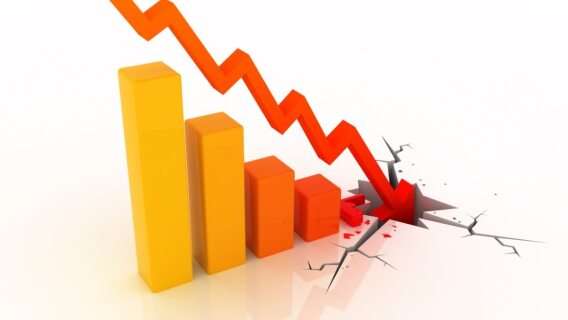In the wake of Wednesday’s tariff announcement, U.S. stocks are selling off across the board. At the time of writing, the Dow Jones index is lower by 3%, the S&P 500 is off by 3.8%, and the Nasdaq is down 4.9%.
Although investors were well aware that something would be announced Wednesday, the market’s reaction showed that investors were not expecting the across-the-board tariffs that were announced.
It’s easy to lose track of in the moment, but it’s important to remember that this is far from the first time that markets have panicked.
I’m reminded of something former Cabot CEO Tim Lutts wrote about his first market crash, and I wanted to share it with you in light of the market action and the massively bearish sentiment on Wall Street.
Here it is, in its entirety...
Everyone remembers their first stock market crash.
Mine was October 19, 1987, when the Dow fell 508 points (22.6%) in one day.
This, of course, was before we all had computers on our desks (and in our pockets) to keep us up to date on what was happening. All we had were telephones—and unanswered questions about how some poorly understood computer-trading programs had allowed this to happen.
Happily, Cabot readers were prepared! The previous issue of Cabot Market Letter (our only advisory back then; the name has since been changed to Cabot Growth Investor) was titled, “Remain in Your Storm Cellar!” and advised that readers hold at least 50% of their accounts in cash.
Back then, the reasons for that cautious view were threefold. First, our interest rate-sensitive indicator had been telling us since April that rising interest rates were bad for the market. Second, our new highs-new lows stock market indicator signaled growing selling pressures. And third, the market’s advance-decline line looked terrible.
[text_ad]
So our readers came through the ’87 stock market crash in far better shape than many investors. And less than a month later we were issuing a new buy signal, as conditions had improved on many fronts.
Since then, I’ve been through many corrections and crashes, and with every one, I think I’ve learned a little more. Every one is different, but overall, there are many similarities, and the following are my main thoughts on them. Hopefully these will help you navigate through our current market downturn/correction/growth stock bear market ... or whatever you want to call it.
Crashes, Corrections and Bear Markets
1. Don’t get caught up in labels. Correction or crash or bear market, the only thing that matters to you is what happens in your own portfolio.
2. Don’t worry about what everyone else is worrying about; that’s already been discounted by the market.
3. Trouble tends to come from where it’s least expected.
4. Just as a bouncing ball experiences progressively smaller fluctuations, so will the market generally experience progressively reduced volatility in the days after a high-volatility crash. Some high-risk investors and some inexperienced investors have been crippled—financially and/or psychologically from the recent carnage—and will disappear from the market for a very long time, leaving slightly wiser survivors to carry on.
5. But for a while longer—perhaps another week, maybe a few weeks—the actions of people selling losers will depress many stocks.
6. At some point, bargain hunters will take control.
7. At that point, anyone still worrying about the conditions that caused the latest troubles will be left behind by a new bull market.
8. The key to success, as always, lies not in predicting what will happen but in tuning out the noise, focusing on what matters (the action of key indicators and the action of your own stocks), and using a proven system of investing such as you’ll find in all of Cabot’s advisories.
To subscribe to any of them, click here.
[author_ad]
*This post has been updated from an original version.

